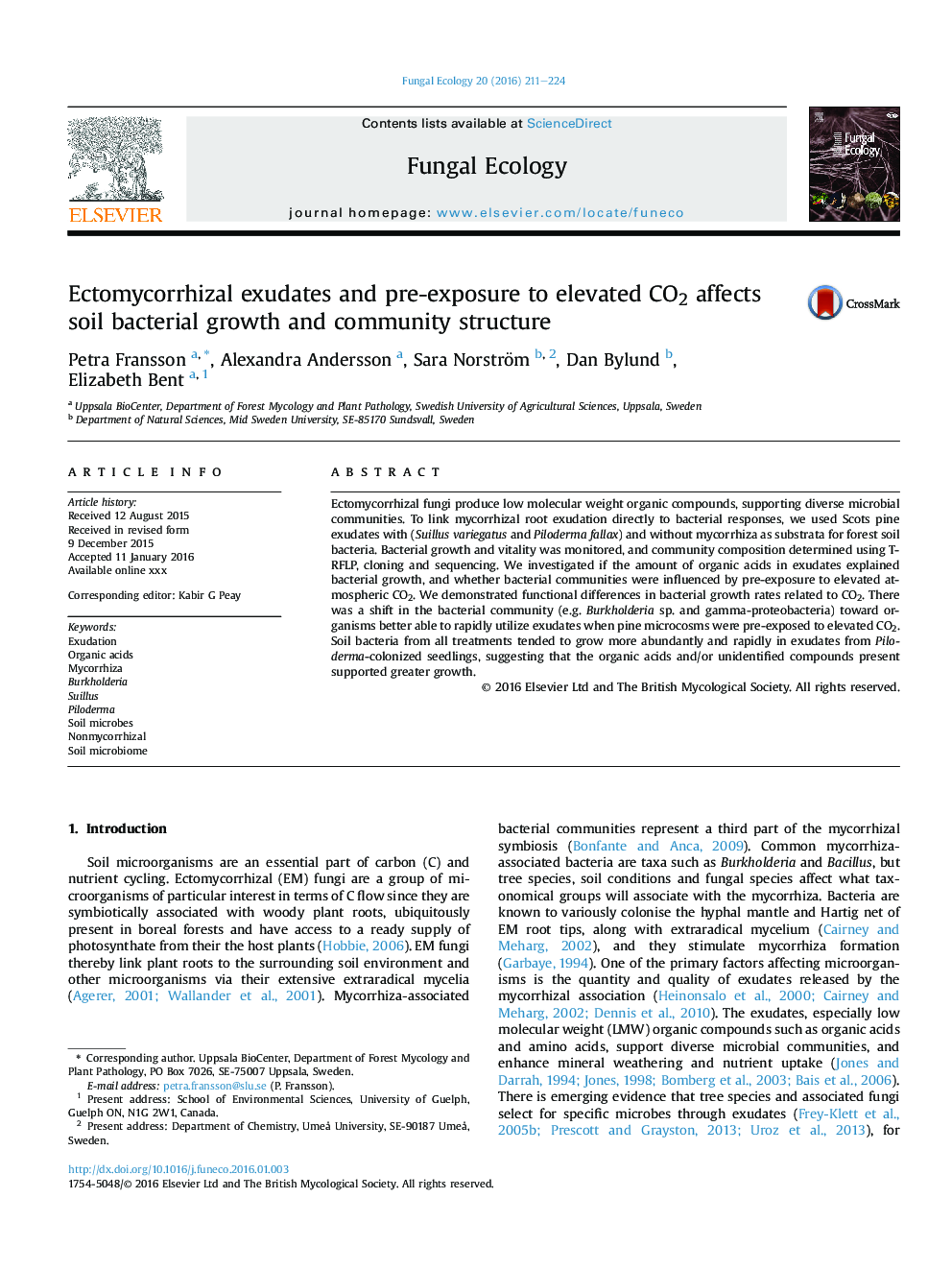| Article ID | Journal | Published Year | Pages | File Type |
|---|---|---|---|---|
| 8384505 | Fungal Ecology | 2016 | 14 Pages |
Abstract
Ectomycorrhizal fungi produce low molecular weight organic compounds, supporting diverse microbial communities. To link mycorrhizal root exudation directly to bacterial responses, we used Scots pine exudates with (Suillus variegatus and Piloderma fallax) and without mycorrhiza as substrata for forest soil bacteria. Bacterial growth and vitality was monitored, and community composition determined using T-RFLP, cloning and sequencing. We investigated if the amount of organic acids in exudates explained bacterial growth, and whether bacterial communities were influenced by pre-exposure to elevated atmospheric CO2. We demonstrated functional differences in bacterial growth rates related to CO2. There was a shift in the bacterial community (e.g. Burkholderia sp. and gamma-proteobacteria) toward organisms better able to rapidly utilize exudates when pine microcosms were pre-exposed to elevated CO2. Soil bacteria from all treatments tended to grow more abundantly and rapidly in exudates from Piloderma-colonized seedlings, suggesting that the organic acids and/or unidentified compounds present supported greater growth.
Related Topics
Life Sciences
Agricultural and Biological Sciences
Ecology, Evolution, Behavior and Systematics
Authors
Petra Fransson, Alexandra Andersson, Sara Norström, Dan Bylund, Elizabeth Bent,
